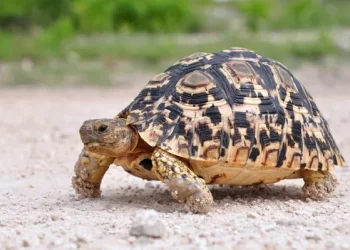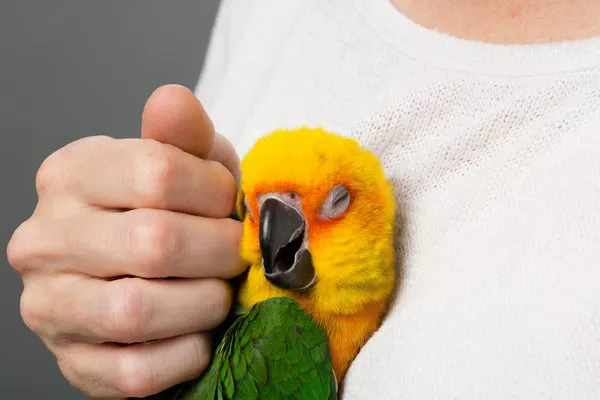Salmonella is a bacterium that can cause foodborne illness in humans, commonly associated with undercooked meat and contaminated food products. However, one lesser-known source of salmonella infection is reptiles, including tortoises. For individuals who keep tortoises as pets, understanding the risks and preventive measures related to salmonella is crucial for maintaining both pet and human health. This comprehensive article explores the likelihood of contracting salmonella from a tortoise, delves into the factors influencing the risk, and offers practical advice on how to minimize the chances of infection.
Understanding Salmonella
What is Salmonella?
Salmonella is a genus of bacteria that can cause an infection known as salmonellosis. There are many serotypes of Salmonella, but the most common ones associated with human illness are Salmonella enterica serotype Typhimurium and Salmonella enterica serotype Enteritidis. These bacteria can be found in the intestines of many animals, including reptiles, birds, and mammals.
Symptoms of Salmonella Infection:
Infection with Salmonella can lead to symptoms such as:
- Diarrhea
- Abdominal cramps
- Nausea
- Vomiting
- Fever
In severe cases, salmonellosis can cause more serious health issues, particularly in young children, the elderly, and individuals with weakened immune systems.
Reptiles and Salmonella
The Connection Between Reptiles and Salmonella:
Reptiles, including tortoises, are known carriers of Salmonella bacteria. Research indicates that a significant proportion of reptiles carry Salmonella in their intestines without showing symptoms of illness. This asymptomatic carriage means that tortoises and other reptiles can shed Salmonella in their feces, which poses a potential risk to humans.
Why Do Reptiles Carry Salmonella?
Reptiles are natural hosts for Salmonella due to their unique gastrointestinal microbiota. Unlike mammals, reptiles have a different balance of gut bacteria that can support the presence of Salmonella. The bacteria can persist in their intestines and be shed in their droppings, leading to potential environmental contamination.
How Likely is It to Get Salmonella from a Tortoise?
Probability of Infection:
While the presence of Salmonella in tortoises is well-documented, the likelihood of contracting an infection from a tortoise depends on several factors. It is important to consider these factors to assess the risk accurately.
Direct Contact with Feces:
Direct contact with a tortoise’s feces or contaminated surfaces can be a primary route of transmission. If a person handles a tortoise and does not wash their hands thoroughly, or if they come into contact with contaminated surfaces (such as the tortoise’s habitat), the risk of infection increases.
Environmental Contamination:
Salmonella bacteria can persist in the environment, particularly in the habitat of reptiles. This includes the substrate, water, and other surfaces that the tortoise frequents. Regular cleaning and proper hygiene are essential to minimize environmental contamination.
Hygiene Practices:
Good hygiene practices are critical in reducing the risk of infection. This includes washing hands with soap and water after handling the tortoise, cleaning the tortoise’s habitat regularly, and ensuring that food and water sources are not contaminated with feces.
Immune System and Health Status:
Individuals with weakened immune systems, such as young children, elderly individuals, and those with chronic health conditions, are at a higher risk of developing severe illness from Salmonella. For these vulnerable groups, extra precautions should be taken to avoid exposure.
See Also: How Often Should Tortoises Eat?
Prevalence of Salmonella in Tortoises:
Studies indicate that a significant proportion of reptiles, including tortoises, carry Salmonella. According to some research, around 90% of reptiles can be carriers. However, this does not mean that every encounter with a tortoise will result in infection, but it does highlight the importance of preventive measures.
Preventive Measures to Reduce the Risk of Salmonella
Proper Hand Hygiene:
The most effective way to prevent salmonellosis is through rigorous hand hygiene. Always wash your hands with soap and water after handling your tortoise, cleaning its habitat, or coming into contact with any surfaces that might be contaminated.
Clean and Disinfect the Tortoise’s Habitat:
Regularly clean and disinfect the tortoise’s enclosure, including the substrate, water dishes, and any other equipment. Use appropriate disinfectants that are effective against bacteria, and ensure that the enclosure is dry, as moisture can support bacterial growth.
Avoid Direct Contact with Feces:
Minimize direct contact with the tortoise’s feces. Use gloves or disposable tools when handling waste, and properly dispose of it in a sealed bag.
Supervise Children:
If you have young children, ensure they are supervised when interacting with the tortoise. Educate them about the importance of handwashing and discourage them from touching their face after handling the reptile.
Regular Veterinary Check-ups:
Schedule regular veterinary check-ups for your tortoise to monitor its health. A healthy tortoise is less likely to carry high levels of Salmonella bacteria, and regular check-ups can help identify any potential issues early.
Educate Yourself and Others:
Educate yourself and others who interact with the tortoise about the risks of Salmonella and the importance of hygiene. Awareness is a key component in preventing infection.
Special Considerations for Tortoise Owners
Species-Specific Risks:
Different species of tortoises may carry varying levels of Salmonella. Research the specific species you own to understand any additional risks or precautions that may be necessary.
Travel and Public Interactions:
If you take your tortoise to public places, be aware of the potential for environmental contamination. Ensure that any surfaces or areas your tortoise comes into contact with are cleaned thoroughly, and follow all recommended hygiene practices.
Consultation with Experts:
Consult with veterinarians or reptile specialists to get tailored advice on managing the risk of Salmonella. They can provide insights based on your tortoise’s health and living conditions.
Conclusion
While the presence of Salmonella in tortoises is a well-established fact, the likelihood of contracting an infection can be managed effectively through proper hygiene and preventive measures. By understanding the risk factors and implementing strategies to minimize exposure, tortoise owners can enjoy their pets while keeping both themselves and their families safe from salmonellosis.
The key to managing the risk lies in maintaining a clean environment, practicing good personal hygiene, and educating those who interact with the tortoise. With these measures in place, the chances of contracting Salmonella from a tortoise can be significantly reduced, allowing for a safe and enjoyable experience with these fascinating reptiles.
Related Topics:

























